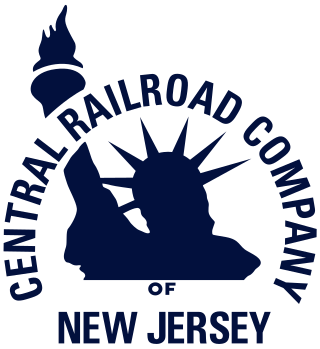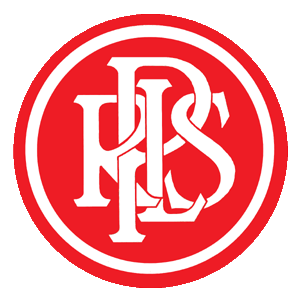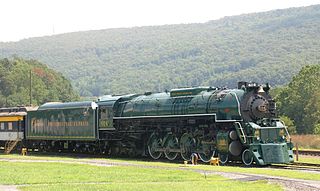
New Hope is a borough in Bucks County, Pennsylvania, United States. The population was 2,612 at the 2020 census. New Hope is located approximately 30 mi (48 km) north of Philadelphia, and lies on the west bank of the Delaware River at its confluence with Aquetong Creek. New Hope and neighboring Solebury and Upper Makefield townships are part of the Philadelphia metropolitan area. The two-lane New Hope–Lambertville Bridge carries automobile and foot traffic across the Delaware to Lambertville, New Jersey, on the east bank. New Hope's primary industry is tourism.

Warminster Township is located in Bucks County, Pennsylvania, United States. It was formally established in 1711. The township is 13.7 miles north of Philadelphia and had a population of 33,603 according to the 2020 U.S. census.

The Reading Company was a Philadelphia-headquartered railroad that provided passenger and freight transport in eastern Pennsylvania and neighboring states from 1924 until its acquisition by Conrail in 1976.

The Central Railroad of New Jersey, also known as the Jersey Central, Jersey Central Lines or New Jersey Central, was a Class I railroad with origins in the 1830s. It was absorbed into Conrail in April 1976 along with several other prominent bankrupt railroads of the Northeastern United States.

The Pennsylvania-Reading Seashore Lines was a railroad that operated in South Jersey in the 20th century. It was created in 1933 as a joint consolidation venture between two competing railroads in the region: the Pennsylvania Railroad and the Reading Company.
The Belvidere-Delaware Railroad was a railroad running along the eastern shore of the Delaware River from Trenton, New Jersey north via Phillipsburg, New Jersey to the small village of Manunka Chunk, New Jersey. It became an important feeder line for the Lehigh Valley Railroad's join to the Central Railroad of New Jersey, which was constructed into Phillipsburg, NJ at about the same time. This connected Philadelphia and Trenton, NJ at one end of the shortline railroad to the rapidly growing lower Wyoming Valley region, and via the Morris Canal or the CNJ, a slow or fast connection to New York City ferries crossing New York Harbor from Jersey City, NJ. In 1871 the CNJ leased various railroads in Pennsylvania, most from the Lehigh Coal & Navigation Company allowing the CNJ to penetrate to the upper Wyoming Valley, over some stretches, competing directly with the Lehigh Valley Railroad and with the Lehigh Canal and the trunk road connection of the Belvidere Delaware Railroad to New York became less profitable since Philadelphia connected more easily to Northeastern Pennsylvania thereafter without needing a double-crossing of the Delaware River; a general revenue decline ensued, leading to the Pennsylvania Railroad acquiring the rights, where it served as part of the Pennsylvania Railroad (PRR) system, carrying mainly anthracite coal and iron ore from northeastern Pennsylvania to population centers along the coast.
The Wilmington and Western Railroad is a freight and heritage railroad in northern Delaware, operating over a former Baltimore and Ohio Railroad (B&O) branch line between Wilmington and Hockessin. The 10.2-mile (16.4 km) railroad operates both steam and diesel locomotives. It was added to the National Register of Historic Places as a national historic district in 1980. Wilmington & Western serves one customer for revenue service, and interchanges with CSX Transportation at Landenberg Junction, Delaware

The Strasburg Rail Road is a heritage railroad and the oldest continuously operating standard-gauge railroad in the western hemisphere, as well as the oldest public utility in the Commonwealth of Pennsylvania. Chartered in 1832, the Strasburg Rail Road Company is today a heritage railroad offering excursion trains hauled by steam locomotives on 4.02 mi (6.47 km) of track in Pennsylvania Dutch Country, as well as providing contract railroad mechanical services, and freight service to area shippers. The railroad's headquarters are outside Strasburg, Pennsylvania.

An excursion train is a chartered train run for a special event or purpose. Examples are trains to major sporting event, trains run for railfans or tourists, and special trains operated by the railway company for employees and prominent customers.

Chesapeake & Ohio 614 is a class "J-3-A" 4-8-4 "Greenbrier" (Northern) type steam locomotive built in June 1948 by the Lima Locomotive Works in Lima, Ohio for the Chesapeake and Ohio Railway (C&O) as a member of the J-3-A class. As one of the last commercially built steam locomotives in the United States, the locomotive was built with the primary purpose of hauling long, heavy, high speed express passenger trains for the Chesapeake & Ohio Railway such as the George Washington and the Fast Flying Virginian. Retired from active service in the late 1950s, the 614 was preserved and placed on display at the B&O Railroad Museum in Baltimore, Maryland. Between 1979 and 1980, restoration work on the locomotive to operating condition took place and it was used for extensive mainline excursion service from the early 1980s until the late 1990s. Since 2011, the locomotive has been on display at the C&O Railway Heritage Center in Clifton Forge, Virginia.
North Pennsylvania Railroad was a railroad company which served Philadelphia, Montgomery County, Bucks County and Northampton County in Pennsylvania. It was formed in 1852, and began operation in 1855. The Philadelphia and Reading Railway, predecessor to the Reading Company, leased the North Pennsylvania in 1879. Its tracks were transferred to Conrail and the Southeastern Pennsylvania Transportation Authority (SEPTA) in 1976.

The Reading Blue Mountain and Northern Railroad, sometimes shortened to Reading and Northern Railroad, is a regional railroad in eastern Pennsylvania. Its headquarters is in Port Clinton. The RBMN provides freight service on 400 miles (640 km) of track. Its mainline consists of the Reading Division between Reading and Packerton and the Lehigh Division between Lehighton and Dupont. Its main freight cargo is anthracite coal.

The Warminster Line is a route of the SEPTA Regional Rail commuter rail system. It serves stations between its namesake town, Warminster, and Center City Philadelphia. Half of the route is shared by other lines, including the Lansdale/Doylestown Line, West Trenton Line, Fox Chase Line, Chestnut Hill East Line, and Manayunk/Norristown Line. All trains continue as part of the Airport Line. With the exception of several rush hour trains which terminate at William H. Gray III 30th Street Station, as well as Thorndale and Newark, DE.

New Hope Railroad 40 is a 2-8-0 "Consolidation" type steam locomotive built in December 1925 by the Baldwin Locomotive Works for the Lancaster and Chester Railroad (L&C) in Lancaster, South Carolina. No. 40 is the only operating steam locomotive on the New Hope Railroad in New Hope, Pennsylvania. As of 2023, No. 40 is operational at the New Hope Railroad, pulling excursion trains.

The Reading T-1 was a class of 4-8-4 "Northern" type steam locomotives owned by the Reading Company. They were rebuilt from 30 "I-10sa" class 2-8-0 "Consolidation" type locomotives between 1945 and 1947. Out of the 30 rebuilt, 4 survive in preservation today, those being numbers 2100, 2101, 2102 and 2124.

The Allentown and Auburn Railroad is a short-line railroad located in the U.S. state of Pennsylvania that operates as both a freight and tourist railroad. The railroad runs between Kutztown and Topton in Berks County.

New Hope is a heritage railroad station on the New Hope Railroad in New Hope, Pennsylvania, United States.

Wycombe is a defunct station on the Reading Company's New Hope Branch. The station is currently on the line used by the New Hope Railroad.
Lahaska is a defunct station on the Reading Company's New Hope Branch. The station is currently on the line used by the New Hope Railroad. The station is located in the 18938 zip code on Street Road at milepost 33. Passenger services ended in 1952 when the line after Hatboro was shut down. After passenger service was discontinued, the station building was purchased by a local land owner who moved it to his property about a quarter mile away from its original location and converted it into a private residence. In 1966, it became a part of the New Hope Railroad. In the late 1980s, the New Hope Railroad constructed a passing siding, built at Lahaska, for locomotives to run around their train. Lahaska became the terminus for the new regular train, which replaced the destination of Buckingham Valley station, of which trips took 75-minutes to complete.

The Warminster Branch is a railway line in the state of Pennsylvania. It runs 8.3 miles (13.4 km) from a junction with the SEPTA Main Line just north of Glenside to Warminster, where it meets the New Hope Railroad. It was originally built by the North East Pennsylvania Railroad, a subsidiary of the North Pennsylvania Railroad, between 1872 and 1874. It was part of the Reading Company system from 1879 until 1976. Today it is owned by SEPTA and hosts Warminster Line commuter rail service. A later extension of the branch to New Hope, Pennsylvania is now the New Hope Railroad heritage railway.















